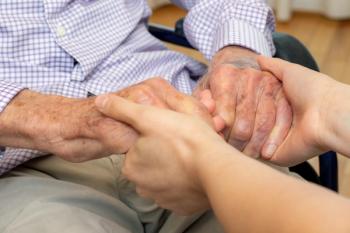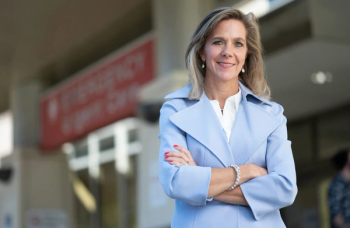
Seniors are getting more help at home after hospitalization, but what are the costs?
As more payers shift seniors from in-patient facilities and back toward their homes, more patients need assistance, a new study shows. The burden on patients and families isn’t fully understood.
More older patients are going home after hospitalization and they are needing more help at home, a new study revealed.
In the past, when an older patient left the hospital, they’d likely go to a rehabilitation facility or perhaps a long-term care facility. Now, payers are increasingly directing patients to recover at home, and those patients are needing more assistance, University of Pennsylvania researchers found in a study published Nov. 30 on
Healthcare policy leaders need to watch this trend, the authors wrote. The burdens and challenges for patients and their families isn’t fully understood.
“As payers steer patients away from inpatient postacute care facilities, policymakers will need to pay attention to this shifting burden of care,” the authors wrote.
Plenty of people understand the challenge of caring for a loved one. Nationwide, an estimated 53 million Americans are caring for an older adult, according to
In this new study, the researchers said it’s not clear if the rise in adults needing help at home is directly tied to changes in payer policies. They said further research is needed to get a better handle of the cost and quality of post-discharge care of seniors.
The study examined 3,591 individuals who were discharged home from an acute care hospital between 2011 and 2017. Researchers examined how many needed help with daily living activities, such as meals, bathing or getting around. The mean age of the participants was 78.
The percentage of seniors who reported needing help at home rose from 38.1% in 2011 to 51.5% in 2017, the study found.
Those who had been independent before they went to the hospital also needed more assistance. The percentage of previously independent patients getting help at home with daily activities rose from 9.3% in 2011 to 31.8% in 2017, according to the study.
The study also looked at those who didn’t receive Medicare-reimbursed home health assistance. Over the six-year period, those participants who needed help at home rose from 22.1% to 28.1%.
Many patients would rather recover at home than in a healthcare facility, the authors noted. For patients, the appeal is understandable. Recovering patients are typically more comfortable in their own homes and have a greater degree of privacy. It’s also less expensive to be at home than in a rehabilitation hospital or skilled nursing care facility.
Many patients receive assistance from home healthcare aides, but some patients need more help from family or friends, the authors noted. And that poses other challenges and costs to the family.
The researchers said it’s important to understand how in-home care is changing for seniors in order to evaluate the costs and benefits of shifting care to the home.
“Our study suggests these costs are being borne by families, either through privately paid or Medicaid-reimbursed help in the home or through informal (ie, unpaid) caregiving by families and friends,” the authors wrote. “While we are unable to distinguish the exact source from which patients report receiving help, we do know it is not Medicare-reimbursed care.”
“It is particularly concerning that this care may be shifted to unpaid caregivers,” the authors wrote. “Caregiving burden is a large and growing concern in the United States and is associated with physical, emotional, economic, and health-related stresses.”
While Medicare may be realizing cost savings by shifting post-hospital care to the patient’s home, the authors suggest there are other societal impacts taking place.
Caregivers typically get little training and it can be daunting for family and friends who are trying to help a loved one recover at home.
“The impact of unpaid caregiving on subsequent cost of care and use of acute care services remains unknown,” the authors wrote.
“Of equal concern is the burden placed on the caregivers themselves,” they added. “There is a growing body of evidence that this burden adversely impacts caregivers’ well-being, and it is disproportionately borne by women.”








































